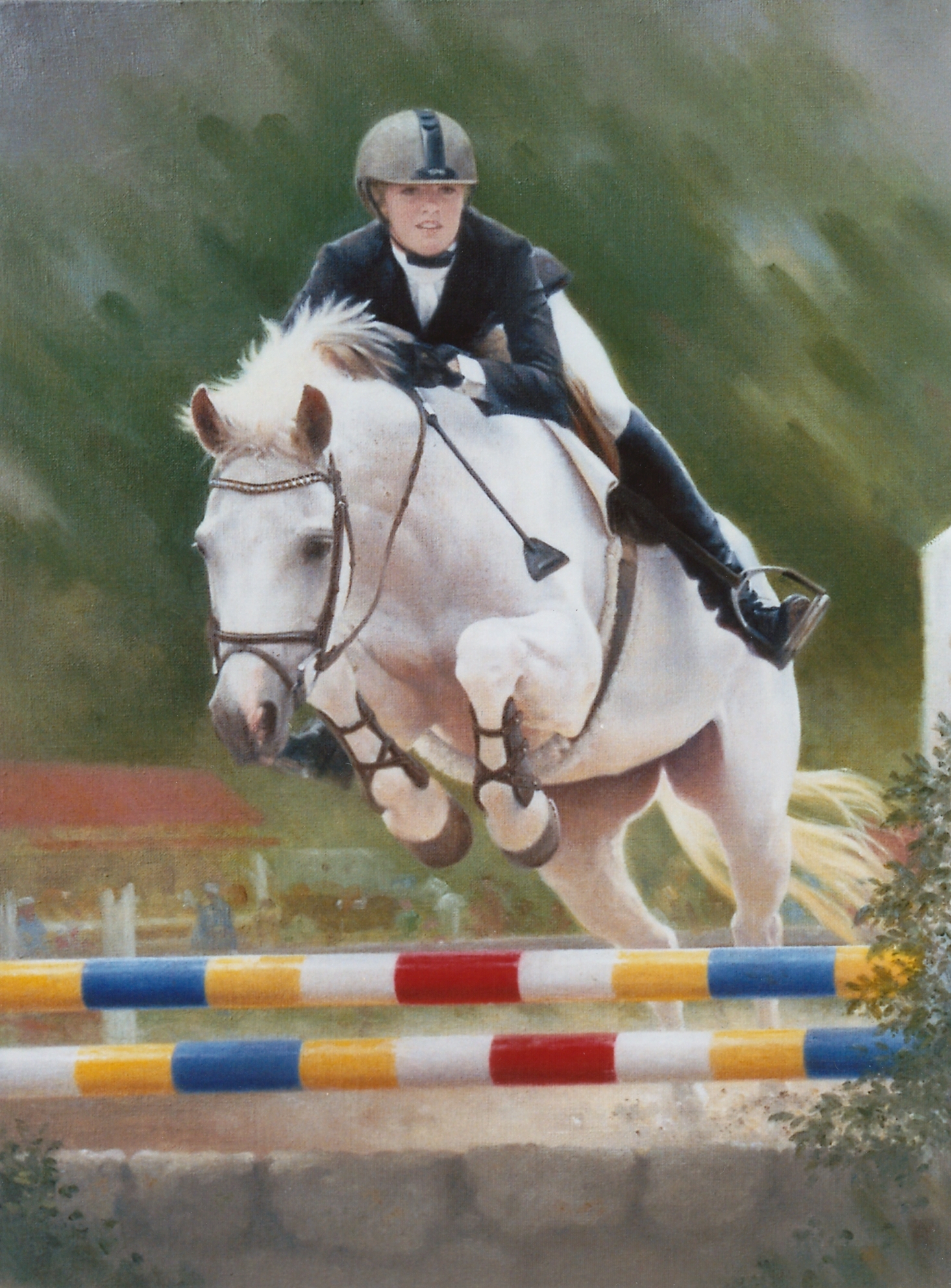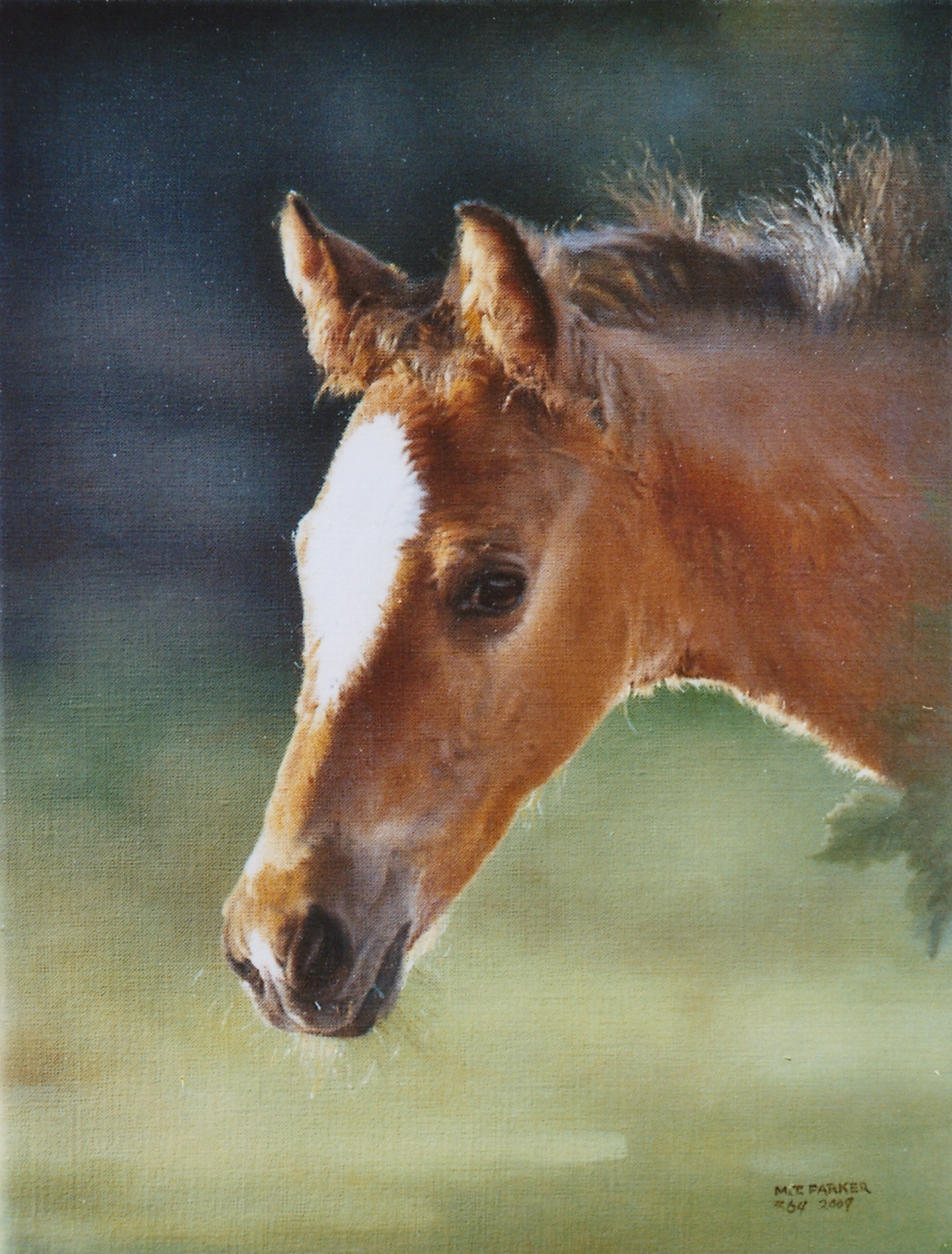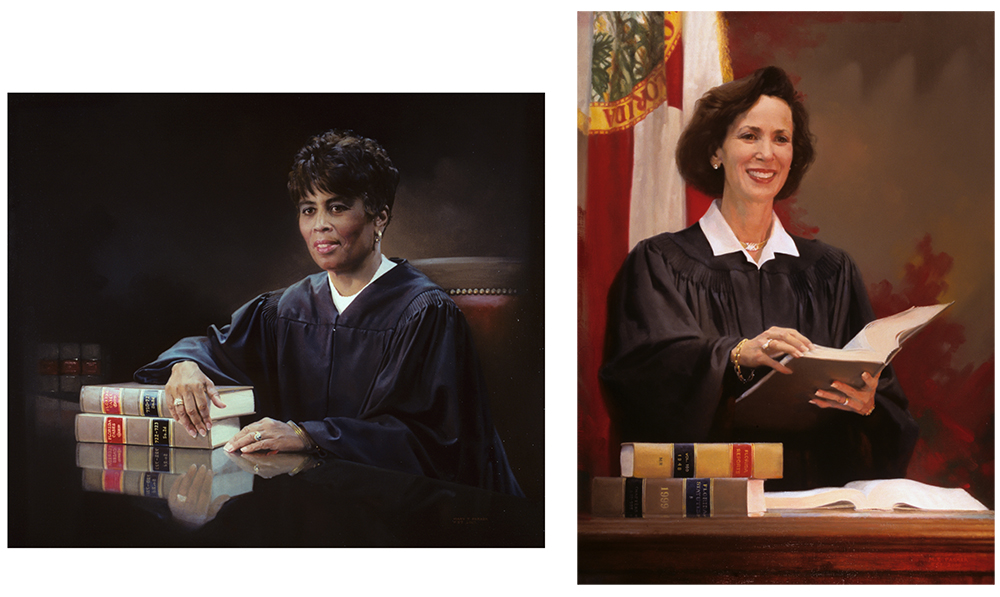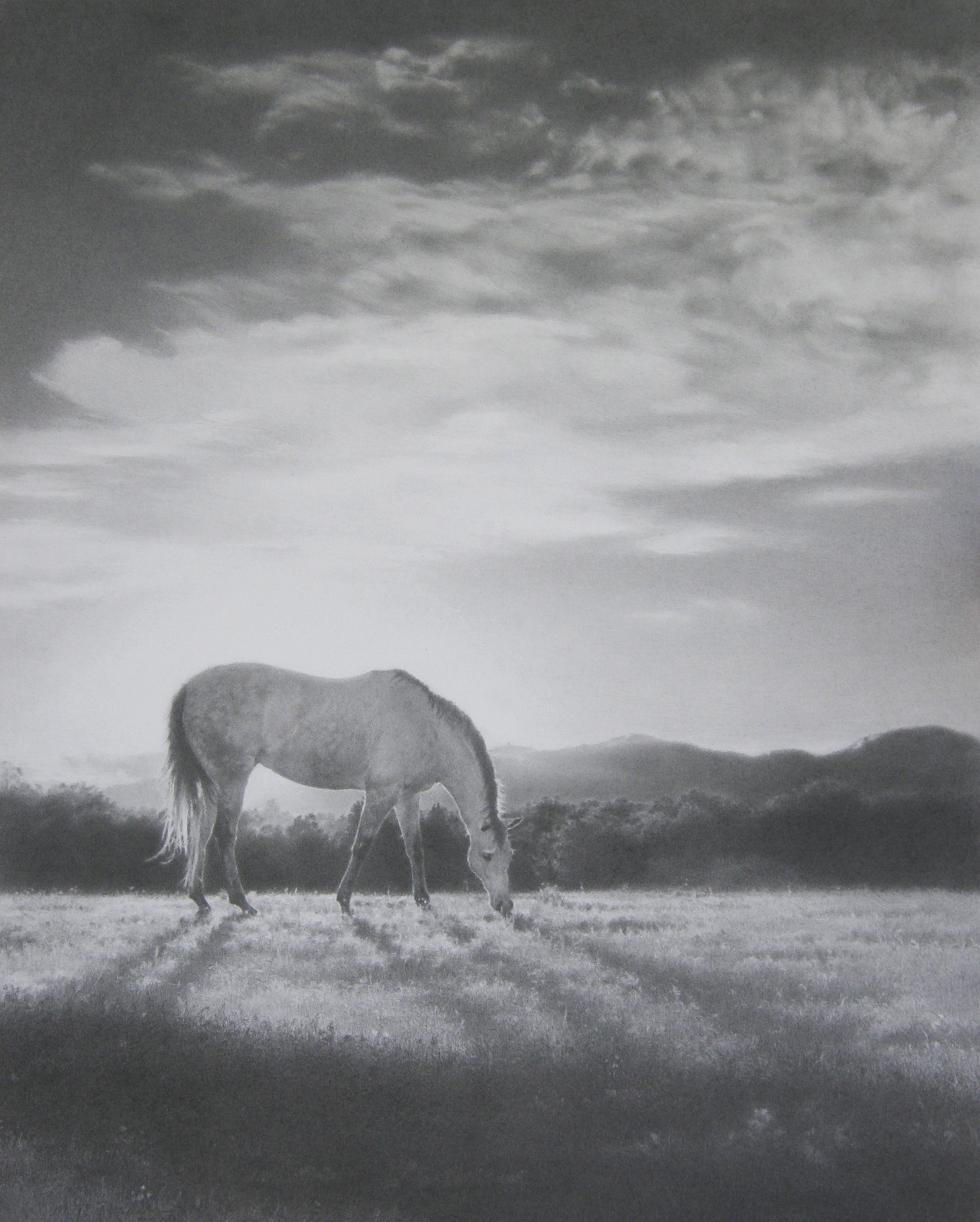Mary T. Parker was only in high school, but she already had a bitter taste in her mouth and her back turned to the art establishment. It was the height of the abstract expressionism movement, and the climate was ill suited for artists like Mary, artists who expressed through means of realism. She possessed a precocious talent in rendering form, but her teachers cast it aside. The trend in art was abstraction, and that was that: they had no use for drawings or paintings of any thing at all.
Mary carried on in spite of the resistance, doggedly pursuing her vision of reality. She ignored formal education and set out to teach herself. Through college she took only a single art course, but in her spare time she studied art with the diligence of a scholar. Her goal was a lifelong one: to capture the spirit her favorite subject matter, the horse. She studied the great painters, illustrators, and sculptors of horses. She drew from photographs. She learned the anatomy. Mary recalls: “ For a long time, with only myself and photographs as teachers, I struggled to make my work as photographic as possible, believing the result to be the most realistic. It was only through looking at countless pictures of paintings and drawings and sculptures by these pre-camera artists that I began to recognize the error of such thinking.” There’s a difference—one that can be felt—between a painting that copies a photograph of a horse and one that evokes the sensation of a horse. The warmth of the body is what she is after.
Her role as a student has remained unchanged throughout the years. A consummate perfectionist, she describes her work only in terms of how it could be better—what she would do the next time to “get it right.” When asked what her greatest accomplishment was, she talked not of her commissioned works hanging in statehouses and courthouses, not of her painting of John Henry at the Kentucky Horse Park, and not of her painting’s record-breaking auction price at the Harness Tracks of America. The accomplishment that tops them all was, as she put it, “summoning the nerve to give up a potentially nice life as a speech therapist to pursue a lifestyle for which I was in no way prepared.” One can’t even argue with that. The decision to pursue the arts was a triumph over uncertainty that propelled her career forward in the way that no other accolade could.
Mary’s fascination with horses began at an early age. She recalls sitting atop a horse for the first time: “The pavement seemed a mile below, the horse’s walk was so rough I feared he might fall apart, and the saddle pinched my chubby bare legs.” The experience was the genesis of an artistic inspiration that she would feed throughout her lifetime. With little exposure to horses during her early childhood, she settled for creating them. She took charge and she drew them and painted them into her life. Her images were adequate substitutes until she got a hold of the real thing, but by age twelve Mary had begun to ride. The horse in flesh and blood showed dominance over pencils and paints, and art fell by the wayside. However, she never could leave it completely. Even through the years of graduate school and tedious first jobs, her talent was always there to beckon her back to the studio.
When she wasn’t around horses, Mary took on commissions of people. Despite her resistance to promote her own work, she enjoyed a steady flow of portrait opportunities. She let her talent do the talking, and soon she was answering requests from the elite politicians in Florida’s Supreme Court and House of Representatives. The justices and senators that she depicted are radiant with life. Though they lack Mary’s favorite subject matter, the horse, they are the fruits of her lifetime devotion to rendering form.
She draws as well as she paints, and actually prefers graphite pencil to any other medium. “There’s something about it,” she states. “—maybe the surgical-like tedium of repeated tiny strokes—that makes me feel closest to warm blooded muscle and hair.” She attempts what any artist knows to be nearly impossible: feel. In her mind she always barely misses. Maybe next time. But to the rest of the world her paintings capture the sensitivity of the living being. In the strength and the grace of Mary’s world, feeling has arrived.




